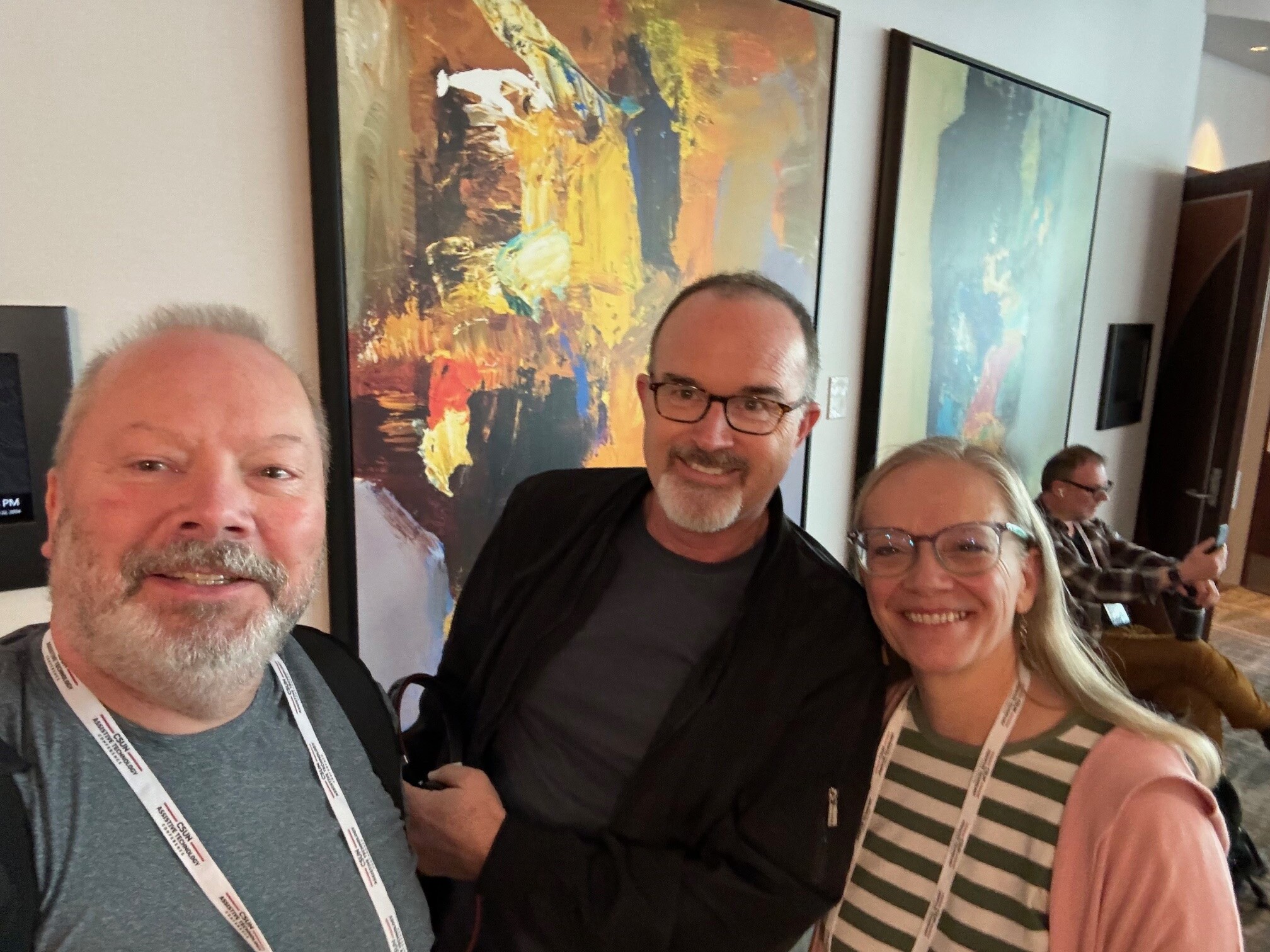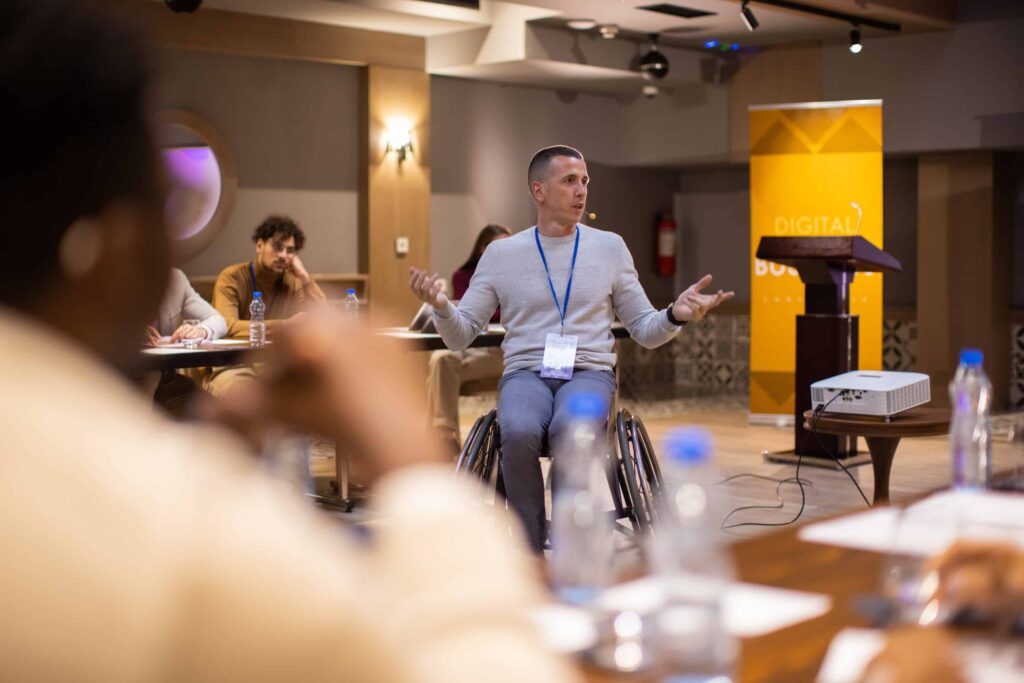Insights From CSUN Assistive Technology Conference 2024
A few of our accessibility team members had the pleasure of attending this year’s CSUN conference in Anaheim, CA. It’s always really energizing to connect with others in the field of accessibility and inclusive design to see what they’re up to, discuss the latest technologies, controversies and the future of our space. This year was certainly not a disappointment in this regard.
In this blog, I highlight a few interesting learnings and observations from our team.

From left to right, Shaun Foreman, Phil Slocum and Kate Tucker of Applause.
We’re alike and we’re very different
My colleague, Phil Slocum, participated in a workshop on disability language and etiquette. And whether new or seasoned in the accessibility field, you cannot be reminded too often of a few points he took away from his with the group.
Some “persons with disabilities” prefer this “person-first” approach to referring to them. Others prefer an identity-first reference, “I’m a disabled person” or “I’m a deaf person.” Still, others don’t want any specific naming and would rather just be called by their name with no distinction between their abilities and anyone else’s. This is similar to the considerations we should extend to persons around their pronoun choice or age-related reference. All of this is emblematic of the fantastic spectrum of diversity in life, which makes things better – particularly when it comes to building products and services.
Diverse, direct feedback is key to success
Amazon had a very interesting session covering continuous improvement for accessibility. They call it the Amazon Bar Raising program. Its goal is to have an objective 3rd-party review internal teams’ products for accessibility and raise the standards in doing so. Amazon leverages its own employees with disabilities for this, and the program is offered across the company to all product groups. They do this through four different touchpoints: project onset/design review, at a “play-with” session, at tech implementation for developers and with QA.
This is a very powerful approach, and it’s something we have been doing here at Applause for a number of years through our Fast Feedback program, which enables our customers to receive direct input from persons with disabilities on their digital products, services and properties.
Humans and AI will be long-term partners
Kate Tucker, one of our accessibility program managers, mentioned that the core of the conference for her was both the excitement and caution around the use of AI in assistive technologies. And, if one thing seemed obvious throughout the five days in CA, it was that testers – humans – will be needed for the foreseeable future of AI as it continues to mature.
No doubt, AI will be incredibly helpful in the accessibility space, as some amazing technologies are already in play for people with disabilities to navigate both physical and digital spaces in ways that provide new levels of inclusion and engagement. Still, the stakes are high, as these technologies must strive for zero failure rates if they are to be utilized. At times, if AI is inaccurate, it can have serious consequences, whether that means an app meant to see the surrounding environment fails to notice an oncoming vehicle or a website description of an image that doesn’t capture the correct context.
An interesting example was given in one of Kate’s workshops involving the image of a racehorse that was shown to AI. It was being loaded into the starting gate by a few trainers. Of course, it’s not uncommon for a horse to resist this handling, particularly if it’s a lively thoroughbred. AI’s interpretation of this image had a severe and serious tone, one that had nuances of animal mistreatment. However, this image was meant for use on a sports website for an article about a horse race. The intention of the image was to celebrate the horse’s athleticism, its fire, its desire to run. So, without the human ability to perceive accurate context, AI got it completely wrong. The need for human testers and intervention can’t be overemphasized. In this case, it would lead to misinterpretation and confusion. In other cases, a poorly described AI-image could have more serious consequences.
Overlays overblown?
One of the big takeaways for me was that sessions at CSUN focused on AI in the here and now, not so much in the future. There was some talk of overlays, which are, to put it nicely, considered vulgar in the accessibility space. Accessibility overlays use JavaScript to help fix accessibility issues on a website. The overlay code is applied after the webpage is rendered in an attempt to alter the site to be accessible. But they don’t live up to the sales pitch hype; in some cases, they make it more difficult to use the site, and the issues they can potentially mitigate are very very small. There are some cases where minimal value can be added, but it would be great if the sales pitches for them were more honest and accurately covered the limitations.
Discussions treaded lightly on overlays. While we heard about one company that is currently being sued because overlays for a client didn’t work, some people shared that overlays are on the rise and AI will solve all the problems. The general consensus among people at CSUN and in the industry is that the technology simply isn’t there yet, and can’t perform at or even close to the level required for accessibility compliance. The potential is there, but it likely will take a long time to mature. For now, and even in the long term, human testing will remain essential.
Shifting left and localization in accessibility
It was interesting to hear conversations around localization within the accessibility space, as these two disciplines have previously been considered distinct. However, there are some hard-coded strings that can’t be seen on the page, so they’re missed when a localization tester tests it. If you’ve got a Spanish website that was translated from English, but developers or testers did not remember to edit or test the code on the page, a screen reader user will come to this section and will read the page in English. Many sites have had this problem.
Though the idea of shifting left in testing isn’t new, there was a noticeable assumption at CSUN that companies are shifting left in general and are focusing more on how to do it better. And a big part of this is involving persons with disabilities early on in design. If you consider that 67% of accessibility issues originate with design, shifting left, leveraging persons with disabilities, addresses this.
When you get persons with disabilities and subject matter experts involved in design, you radically reduce bugs. There are two major benefits to doing this. You avoid the very costly bug fixes near the end of the SDLC, and you won’t need any major design changes because you will have found all of these accessibility issues early in the SDLC. Extending this logic, the resulting bugs that slip through will be very minor and not prompt any need for redesigning any substantial bits of the user experience.
Accessibility is about connection
Our team was energized by the CSUN conference. Even with all our remote connective technologies, nothing beats getting face to face with industry peers to exchange the latest thinking and insights in this field that we all love – and equally important – that is so critical to all users. The Applause team looks forward to seeing our friends again soon. In the meantime, if we can help with any accessibility or inclusive design issues, please visit our accessibility testing page, or reach out to me on LinkedIn.
